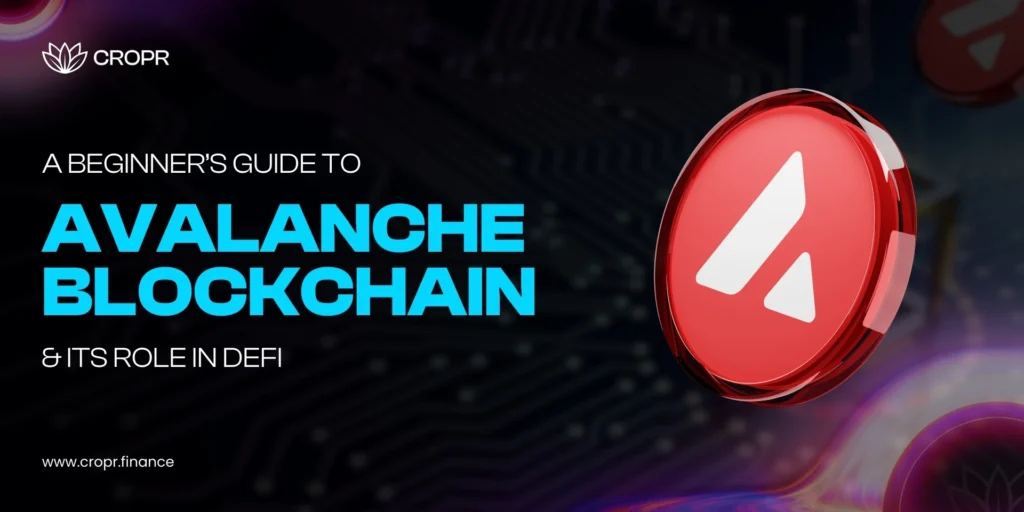In the constantly shifting world of decentralized finance (DeFi), speed, scalability, and security are non-negotiable. For a network to stand out, it must offer not only performance but also a development environment that can handle real-world demands without compromising decentralization. The Avalanche blockchain has emerged as one such Layer 1 blockchain that convincingly addresses all three pillars.
But what exactly is Avalanche? And why is it gaining momentum in DeFi circles? Let’s break it down.
What is Avalanche?
Avalanche is a high-performance, open source blockchain platform designed for launching decentralized applications and enterprise blockchain deployments. At its core, it’s a Layer 1 blockchain that provides near-instant transaction finality, meaning your transaction is confirmed in under two seconds.
That’s a significant difference, especially when compared to Ethereum, where network congestion frequently results in slower processing times and higher gas fees.
The Avalanche blockchain network is secured using the Snowman consensus protocol, a variation of the Avalanche consensus optimized for smart contracts and high-throughput transactions. It supports multiple virtual machines, allowing developers to define how their blockchain should behave. That flexibility isn’t just appealing; it’s critical for DeFi scalability.
The Three-Chain Architecture
Most blockchains operate with a single chain. Avalanche takes a different route. It consists of three interoperable blockchains:
- X-Chain (Exchange Chain): This handles asset creation and exchange.
- C-Chain (Contract Chain): Supports Ethereum-compatible smart contracts.
- P-Chain (Platform Chain): Used for staking and validator coordination.
This separation of responsibilities allows Avalanche to handle thousands of transactions per second without breaking a sweat.
It also explains why developers can easily migrate Ethereum-based applications to Avalanche with minimal friction. That’s a powerful proposition for teams building DeFi tools.
Why Avalanche Appeals to the DeFi Ecosystem
Let’s be honest. The DeFi world is crowded. New protocols are launched every week. So, what makes Avalanche different?
Here are a few reasons:
- Speed: Avalanche finalizes transactions in under 2 seconds.
- Low fees: Unlike Ethereum, it doesn’t punish users with volatile gas costs.
- Scalability: It can process over 4,500 transactions per second without slowing down.
- Ethereum Compatibility: Developers can deploy Solidity smart contracts with little to no changes.
That last point is especially important. Avalanche supports the Ethereum Virtual Machine (EVM), which means that existing DeFi platforms, such as Aave, Curve, and SushiSwap, have already integrated or launched versions on the Avalanche network.
The Role of AVAX Token
At the heart of Avalanche’s ecosystem is the AVAX token. It serves multiple roles:
- Transaction Fees: All operations on the Avalanche network incur AVAX fees.
- Staking: Validators must stake AVAX to participate in network consensus.
- Governance: Token holders have voting power on network upgrades.
With over 70% of the circulating supply staked at times, AVAX has become more than just a utility token. It represents the community’s trust in the network’s design and long-term sustainability.
Avalanche Use Cases Beyond DeFi
While Avalanche DeFi applications receive most of the attention, the network supports a much broader range of applications. Some interesting examples include:
- Institutional-grade assets: Avalanche is being utilized to tokenize real-world assets, including equities and real estate.
- Gaming: Projects like Shrapnel and Crabada build gaming ecosystems on Avalanche.
- NFTs: Although Ethereum dominates the NFT market, Avalanche offers low-cost minting and trading.
What’s notable is how Avalanche handles these use cases without crowding out core DeFi infrastructure. The architecture allows these verticals to run parallel without friction.
Avalanche in Action: DeFi Protocols You Should Know
A few DeFi protocols currently thriving on Avalanche include:
- Trader Joe: A decentralized exchange offering yield farming, lending, and staking.
- Benqi: A lending and borrowing platform with high liquidity and low fees.
- Yield Yak: An auto-compounding yield aggregator that optimizes returns.
These platforms demonstrate that the Avalanche crypto ecosystem is not only fast but also mature and robust. Developers aren’t just experimenting; they’re shipping real products.
Challenges and Considerations
Like any network, it faces security risks, smart contract vulnerabilities, and a need for ongoing developer growth. Additionally, while Ethereum compatibility is a strength, it also means Avalanche inherits some of Ethereum’s challenges, such as contract bloat and potential exploit patterns.
Still, the proactive validator model and rapid block finality provide a solid base for minimizing such threats.
With the growing adoption of Avalanche smart contracts, particularly in DeFi, the ecosystem is strengthening both technically and socially.
Final Thoughts
The Avalanche blockchain represents a serious contender in the layer 1 space. It’s fast, cheap, and flexible, three qualities every DeFi builder values. But beyond the specs and documentation, it’s the real-world traction that makes Avalanche worth watching.
At CROPR, we’ve built on that belief.
Our platform integrates seamlessly with the Avalanche blockchain, bringing efficient, multi-chain DeFi portfolio management into a single, intuitive dashboard. Whether you’re managing a handful of assets or tracking dozens of positions across protocols, CROPR gives you the clarity and speed needed to make better decisions, without switching tabs or chasing gas fees.
Ready to see how it works?
Try our demo version and experience how Avalanche’s capabilities power a smoother, smarter DeFi experience.
Because in DeFi, every second and every choice counts.
And we’ve built CROPR to help you make the most of both.

